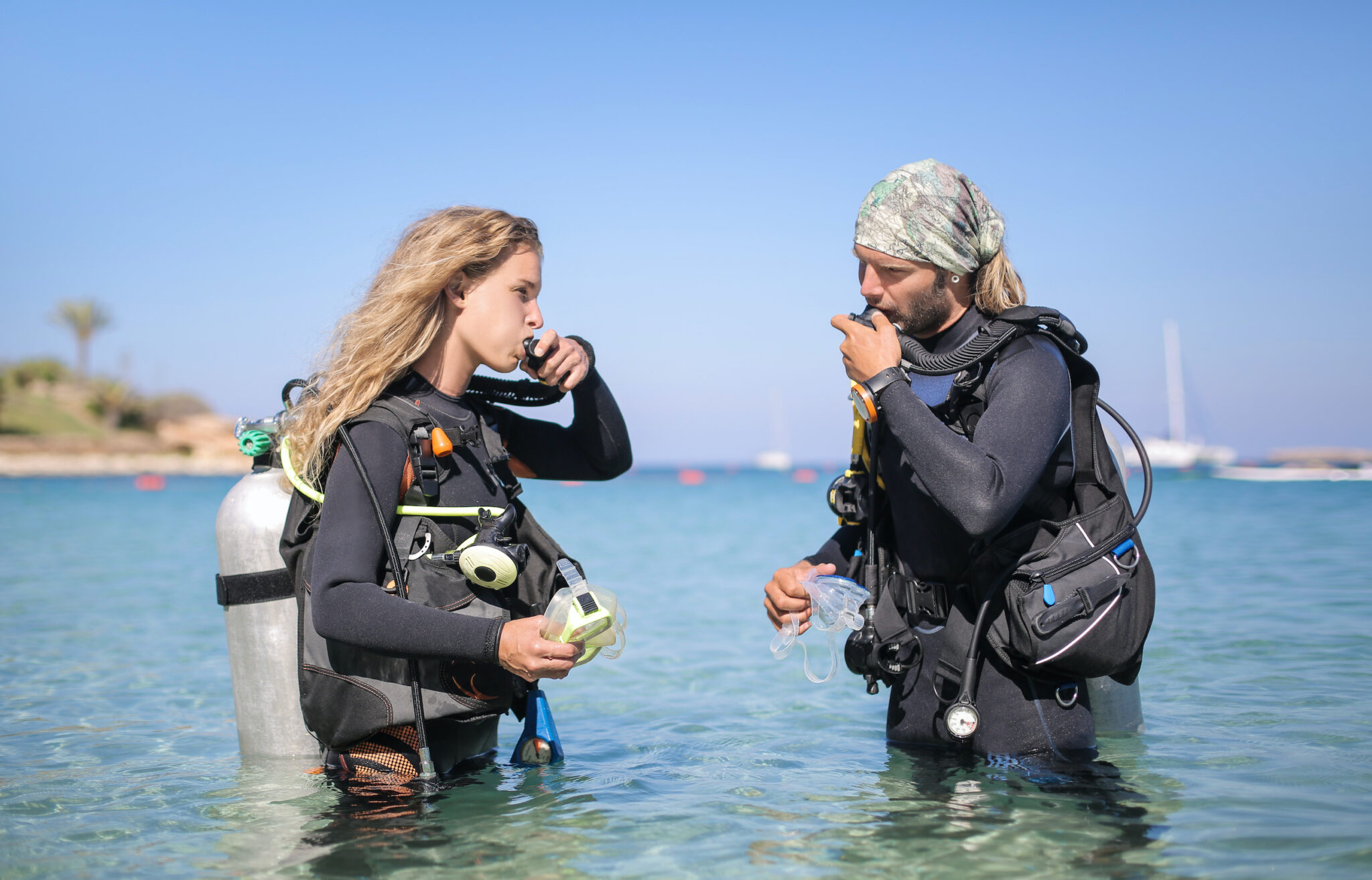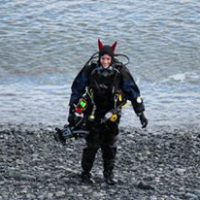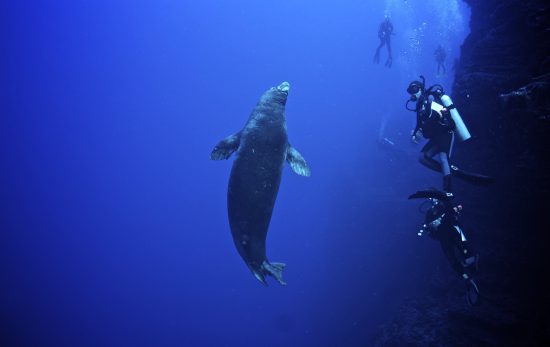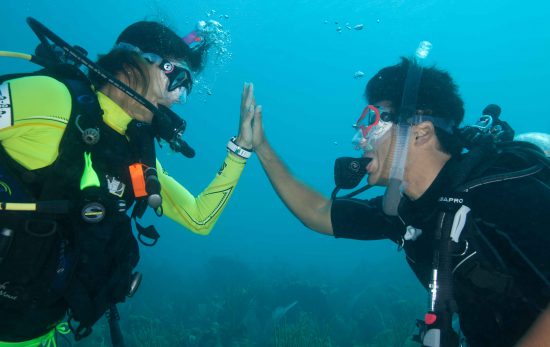As a PADI certified diver, you’ll surely spark awe and curiosity in your non-diving friends. Even with millions of certified divers in the world, it’s still extraordinary to have the ability to breathe underwater while exploring the magic of the underwater world!
Previously, we broke down some common misconceptions about scuba diving like, “Aren’t sharks aggressive?” and “Don’t you have to travel far away to dive?”. Here, we’re taking a look at five of the most common questions you’ll come to expect from your curious non-diving friends. Their curiosity, mixed with your knowledge, might just lead them to become PADI certified divers too!
How deep do you go?
Your non-diving friends might think you’re venturing to the deepest depths of the ocean – but the reality isn’t quite as dramatic. Recreational divers with the PADI Deep Diver specialty can dive to 130 feet (40 meters) while Tec 100 CCR divers can explore as far as 330 feet (100 meters). Even record-breaking scuba divers have only descended to depths of 1,090 feet (332 meters) beneath the surface – which is less than a tenth of the distance to the Titanic. That leaves a lot of ocean beyond the reach of scuba divers, but with so much to explore in shallower waters, we’re not too bothered.
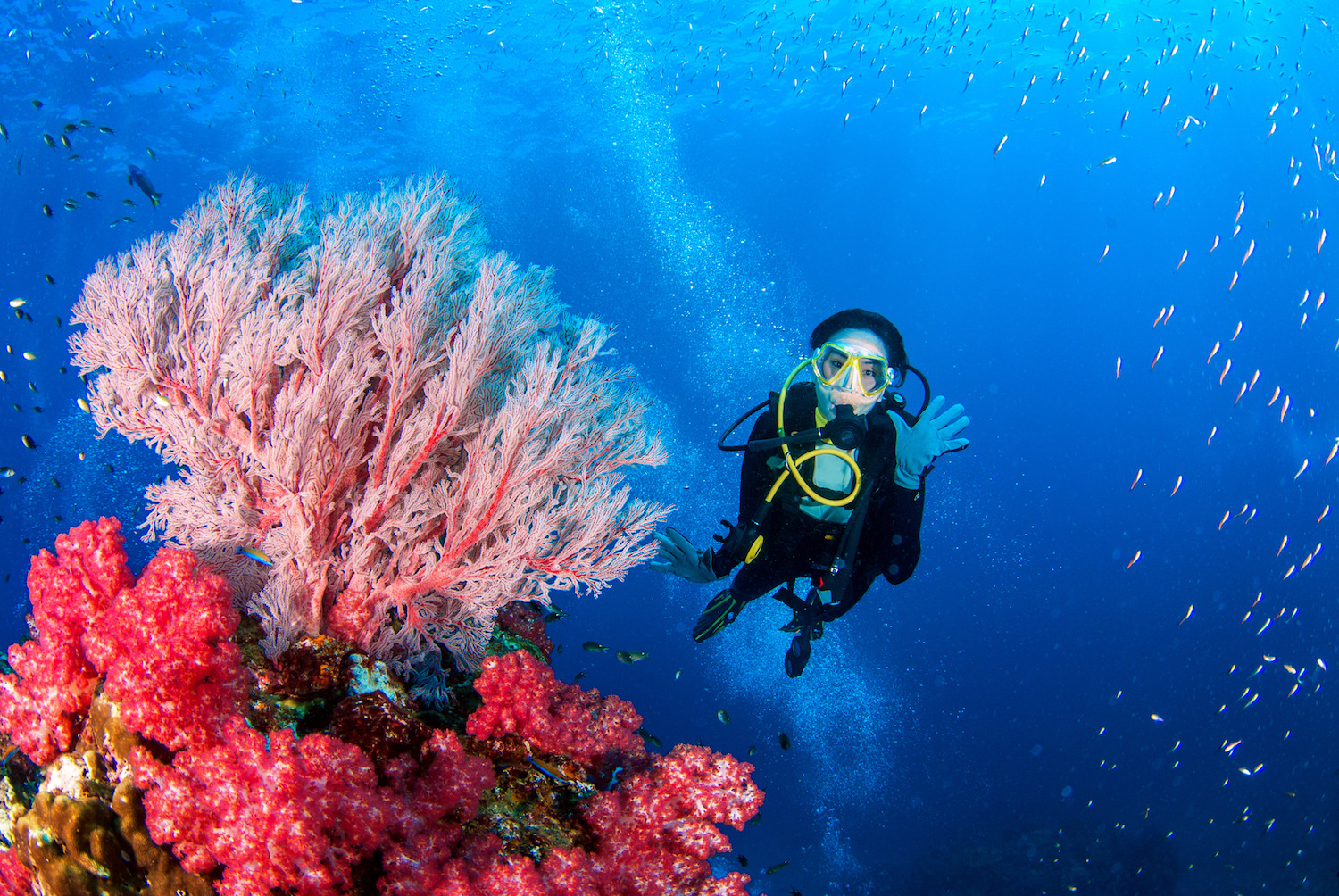
Is there much to see?
The answer to this one is easy — lots! Over 200,000 flora and fauna have been discovered in the ocean so far, and as divers we have the privilege of seeing a completely different side of our planet than the rest of the world. From mysterious shipwrecks and vivid coral reefs, to etherial kelp forests and stunning underwater formations, the variety of marine ecosystems to explore is astounding. The marine life that call those ecosystems home, from parrotfish and manta rays to octopus and sea lions, divers have a front row seat to Blue Planet in real life.
Isn’t it expensive?
Many landlubbers wonder how their underwater pals can afford such a premium pastime. The truth is, scuba diving doesn’t need to cost the earth. Keep an eye out with your local PADI Dive Shop, via PADI eLearning, or with PADI Travel for great deals on courses, trips and equipment. Plus, you don’t need to buy all your dive kit in one go either. You can rent what you need until you decide (and save up for) the gear that works best for you.
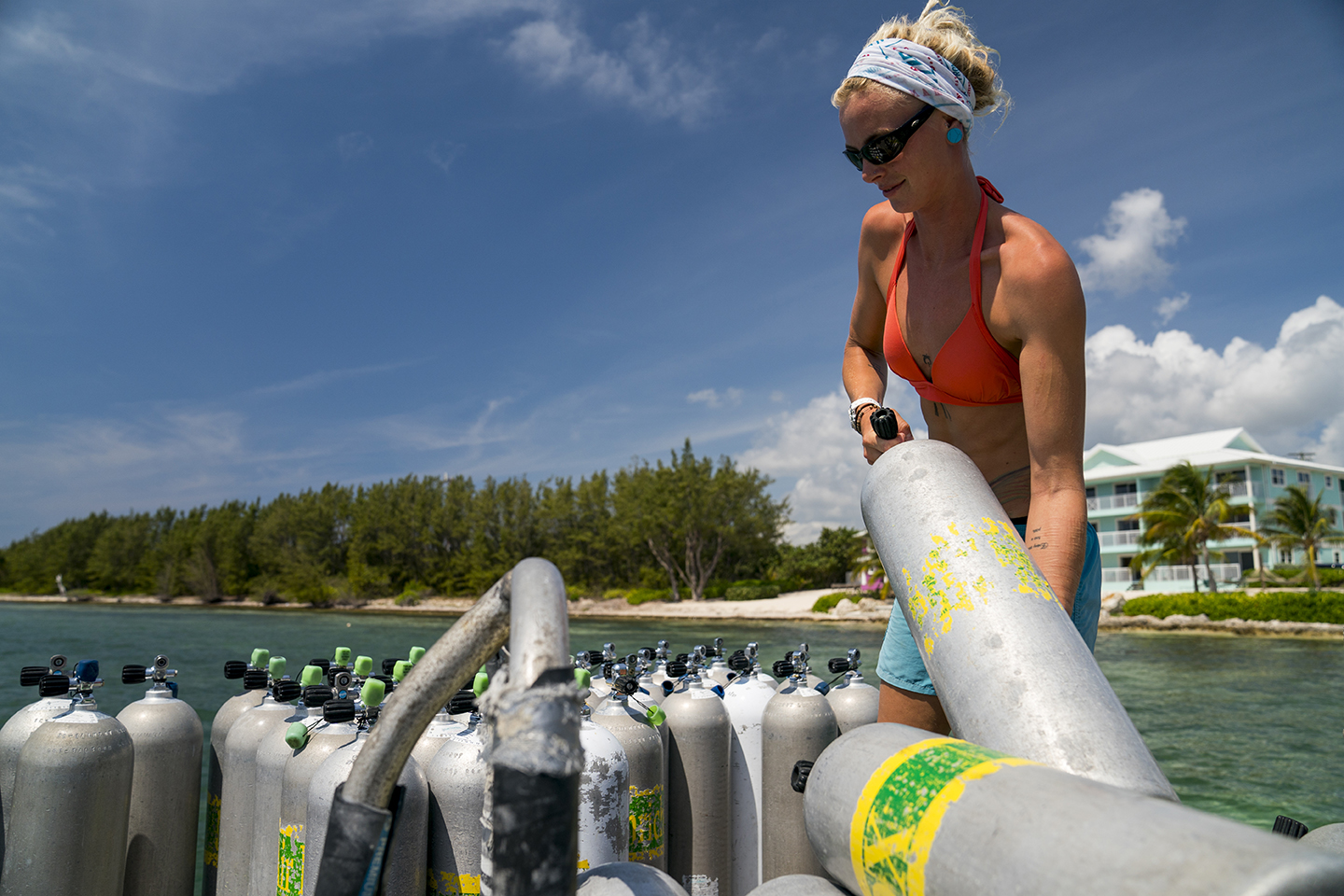
Isn’t it tiring carrying all that gear?
We can forgive our friends for thinking we possess superhuman strength; cylinders, lead weights, thick wetsuits — it all looks pretty heavy. Like any sport, a degree of fitness will help, and there are a few exercises that build up core muscles in our arms, legs and back to make carrying equipment a bit easier. But as soon as we’re in the water and achieve neutral buoyancy, we feel completely weightless and at ease (thanks, Archimedes).
Is it difficult to learn?
Nope! Like any new hobby or profession, scuba diving has its own set of skills, knowledge and safe practices. PADI offers tools to suit every learning style, from books and DVDs, to online eLearning and, of course, the classroom. In practical in-water sessions, PADI Instructors take every step at each student’s pace. PADI Pros always make sure their students feel confident and competent before progressing onto the next lesson.
Of course the best way to satisfy your non-diving friend’s curiosity is to encourage them to try diving for themselves! They can get started on the PADI Open Water Diver course right now from the comfort of their own home via PADI eLearning. Or they can contact their local PADI Dive Center or Resort to inquire about course offerings and details.
